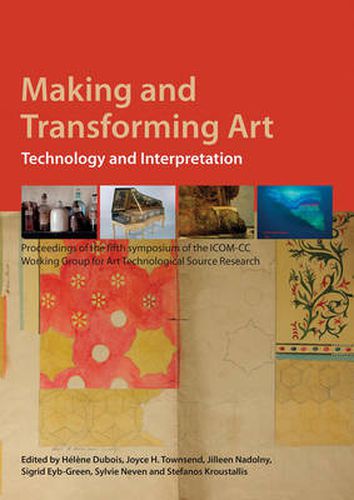Readings Newsletter
Become a Readings Member to make your shopping experience even easier.
Sign in or sign up for free!
You’re not far away from qualifying for FREE standard shipping within Australia
You’ve qualified for FREE standard shipping within Australia
The cart is loading…






The papers in this volume, presented at the Royal Institute of Cultural Heritage (KIK-IRPA) in Brussels in November 2012, cover a wide range of works of art, periods, sources and approaches, from Dioscorides to contemporary artists’ installations. The theme of the conference is reflected in studies such as Tingely’s explosive Homage to New York, the evolutions and transformations of harpsichords in France in the seventeenth and eighteenth centuries, the art of wax anatomical models in Spain, or neo-gothic polychromies. The confrontation of source research with experimental reconstruction and analysis are illustrated in the study of anthocyanin colorants in Medieval European illuminators workshop or of tempera paint around 1900. Research on artist’s materials, such as vermillion, zinc white or turpentine, refers to patents, inventories, diaries and chronicles. The interpretation and transmission of sources is central to several papers. Innovative databases on Art Technological Sources are also presented.
$9.00 standard shipping within Australia
FREE standard shipping within Australia for orders over $100.00
Express & International shipping calculated at checkout
The papers in this volume, presented at the Royal Institute of Cultural Heritage (KIK-IRPA) in Brussels in November 2012, cover a wide range of works of art, periods, sources and approaches, from Dioscorides to contemporary artists’ installations. The theme of the conference is reflected in studies such as Tingely’s explosive Homage to New York, the evolutions and transformations of harpsichords in France in the seventeenth and eighteenth centuries, the art of wax anatomical models in Spain, or neo-gothic polychromies. The confrontation of source research with experimental reconstruction and analysis are illustrated in the study of anthocyanin colorants in Medieval European illuminators workshop or of tempera paint around 1900. Research on artist’s materials, such as vermillion, zinc white or turpentine, refers to patents, inventories, diaries and chronicles. The interpretation and transmission of sources is central to several papers. Innovative databases on Art Technological Sources are also presented.